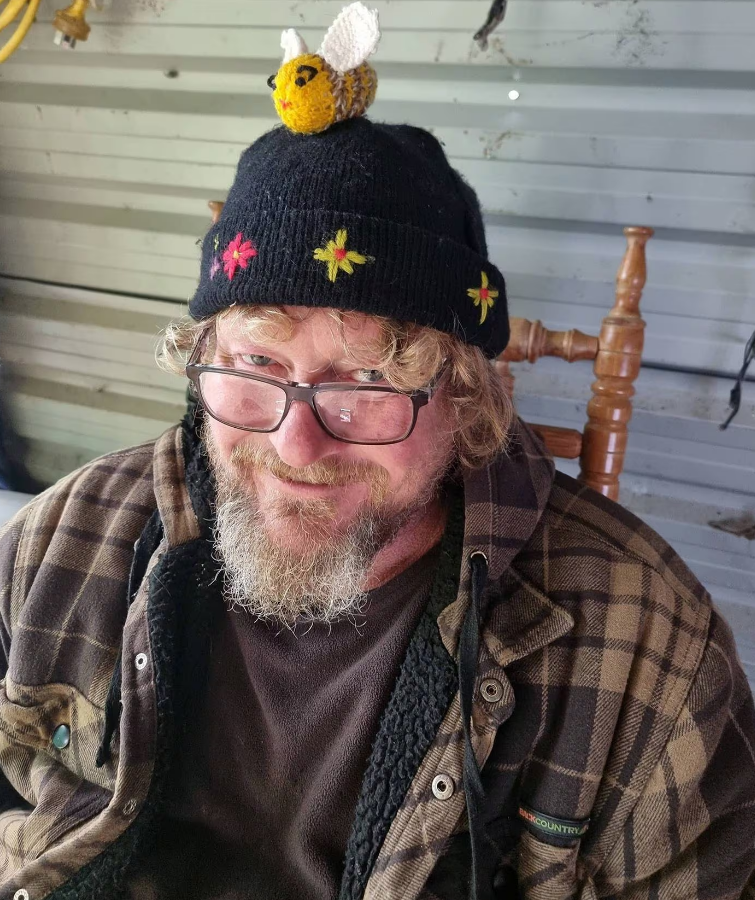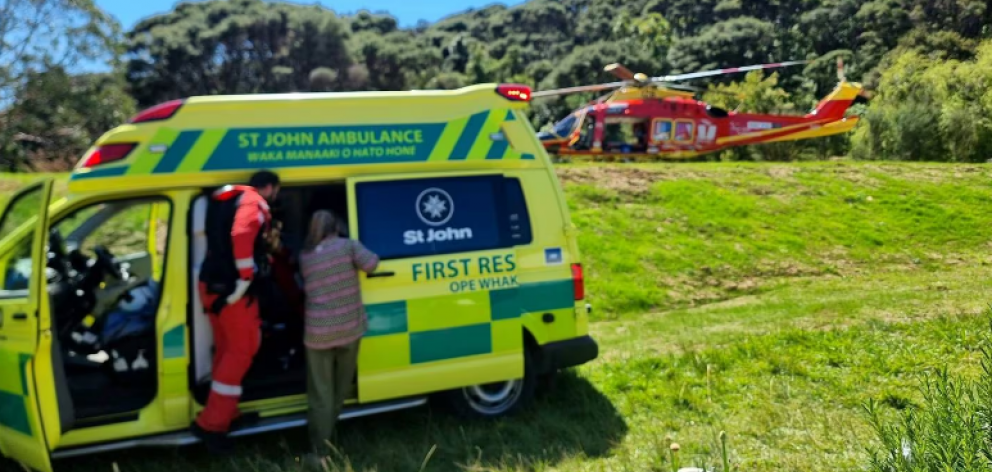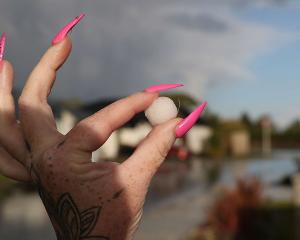
The 57-year-old was on a ride-on lawnmower on his 12-hectare property near Tryphena, on Great Barrier Island’s south-western coast on October 4 last year, when a bee from nearby hives - which don’t belong to Pont - got stuck in his hair.
But between having recently let his locks grow longer than usual and suffering from carpal tunnel in his dominant left hand, Pont’s attempts at a speedy extraction proved disastrous.
“I think I pushed on the bee, it stung me … just behind my left ear. Then another one got me on the crown of my head within seconds. I grabbed it with my left hand to try to get it out, and I think I’ve squashed that load of venom into me as well.”
Pont had been stung before and suffered nothing more than a bit of pain and redness, but he quickly realised this time was different.
“It was like when you’re in the shower and the water cascades down the top of your head to your toes. It was like that, [feeling] the venom going down from my head.”
He felt a burning sensation in his eyes and tongue, went red and became very itchy, but was able to ride the short distance back to the lean-to shack he shares with his partner, telling her to call 111.
“I was itchy all over, and my skin was getting redder and redder … and my tongue was starting to swell up, and my throat was restricting.”
With an antihistamine under his tongue that “didn’t really do anything” and while trying to stay calm as he waited for help to arrive, Pont - now also nauseous - feared the worst.
“I said to my partner, ‘I think my time’s up’. It was happening that quick.”

“He kept calling my name, saying, ‘You’ve got to respond to me, just squeeze my hand, or raise a hand to let me know you’re still with me’.
A second dose of adrenaline was then given, with Pont falling unconscious.
“I didn’t even hear the [rescue] chopper arrive, which was within 20 to 30 metres of the ambulance.”
When he later regained consciousness, the sea freight transport worker found himself looking at a swag of concerned faces.
Despite the serious situation, Pont was still able to crack a joke.
“There’s all the [Tryphena volunteer] fire brigade standing there, all the chopper crew and the paramedics, and I think there were two nurses and the ambulance driver working on me.
“So I just said, ‘Oh, who brought the popcorn?’ It was like the circus.”
Shaking and “a little bit freaked out”, Pont was assured by the ambulance officer he was just suffering from the effects of the adrenaline - treatment which had arrived just in time.
“[He] said, ‘Another 10 minutes and I wouldn’t be talking to you’.”
Because the danger had passed, Pont was able to be flown to the island’s medical centre in Claris - rather than to an Auckland Hospital - where he spent four hours under observation.
And although he’d escaped otherwise unharmed, Pont knew he was lucky.
He was talking about his close call to thank and support those who came to his aid, including the Auckland Westpac Rescue Helicopter, which is fundraising for future missions.
“For the island, being so far from the hospital, if there’s a critical situation the helicopter’s the fastest and the best.”

The two stings weren’t his first, but October 4 was the first time he’d experienced a serious adverse reaction, Pont said.
Why he became so unwell this time remained a mystery, with a subsequent sting to his shoulder causing no issues.
But the dad-of-two’s not taking any chances.
He now has an EpiPen (anaphylaxis treatment), and his mowing gear has switched from shorts, sunhat, earmuffs and glasses to full body covering, including veiled hat and gloves.
“Now I can just cruise past them [bees] nice and slow and think, ‘Yes, you can’t get me now’.”
What is anaphylaxis?
Anaphylaxis is a severe, life-threatening allergic reaction that can occur seconds or minutes after exposure to something you’re allergic to - such as insect venom, latex, peanuts, seafood and some medications.
Symptoms can include constriction of the airways and a swollen tongue or throat, a weak and rapid pulse, skin rash, low blood pressure, itchy and flushed or pale skin, nausea, vomiting or diarrhea, dizziness and fainting.
Anaphylaxis needs to be treated immediately with an injection of epinephrine (adrenaline), or it can be deadly.
Source: The Mayo Clinic
* The Auckland Westpac Rescue Helicopter 2024 Classic Car Lottery is on now. To be in to win a 1972 Plymouth ‘Cuda 340 AAR Tribute* visit www.classiccarlottery.org.nz *Terms & conditions apply.












